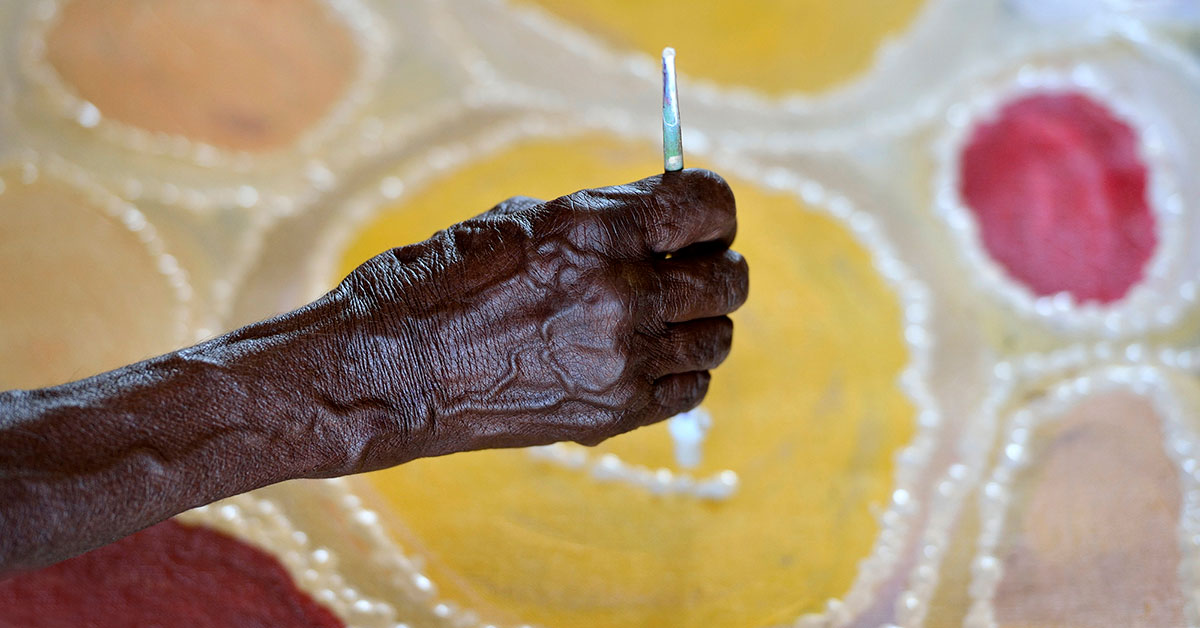Protecting Aboriginal and Torres Strait Islander visual arts and crafts
23 August 2022

Photo: Wayne Quilliam
A draft report focuses on ways to address fake 'Indigenous-style' art and support Aboriginal and Torres Strait Islander artists and art centres.
Aboriginal and Torres Strait Islander visual arts and crafts are part of Australia’s national identity.
Aboriginal and Torres Strait Islander people have been creating visual arts and crafts for tens of thousands of years, helping to maintain, strengthen and share Aboriginal and Torres Strait Islander cultures. This practice has evolved into a significant industry – total sales reached about $250 million in 2019-20 – generating income for Aboriginal and Torres Strait Islander artists and art workers, and creating economic opportunities for communities.
But inauthentic arts and crafts – predominantly ‘Indigenous‑style’ products not created by Aboriginal and Torres Strait Islander people – are pervasive. In a recently released report, the Productivity Commission has found that two in three Indigenous-style souvenirs are fake, with no connection to – or benefit for – Aboriginal and Torres Strait Islander people.
The Australian Government tasked the Productivity Commission with examining the size and characteristics of the markets for Aboriginal and Torres Strait Islander visual arts and crafts, and exploring potential policy changes to address market deficiencies.
The Commission found that while many inauthentic products are generic imitations of Aboriginal and Torres Strait Islander designs and styles, some people make use of Indigenous Cultural and Intellectual Property (ICIP), such as sacred symbols, in inappropriate ways and without the authorisation of traditional custodians. This misrepresents traditional stories and images and limits the economic benefits flowing back to Aboriginal and Torres Strait Islander people. Legal recognition and protection of ICIP are patchy, with few limits on whether, how and by whom ICIP is used in visual arts and crafts.
These concerns are longstanding and have been the subject of multiple reviews over many years. The Commission’s recently released draft report proposes two new remedies.
First, mandatory labelling of inauthentic Aboriginal and Torres Strait visual arts and crafts – mainly souvenirs – would raise consumers’ awareness of fake products and help steer them toward authentic purchases. Putting the regulatory onus on suppliers of fake products would impose a negligible compliance burden on Aboriginal and Torres Strait Islander artists (and their commercial partners) and involve relatively modest costs.
Second, a new law that strengthens protection for aspects of ICIP used in visual arts and crafts would formally recognise the interests of Aboriginal and Torres Strait Islander communities in their cultural assets, promote respectful collaborations, and allow for legal action where protected cultural assets are used without the authorisation of traditional owners.
More broadly, improving the effectiveness of support services, as well as strengthening the Aboriginal and Torres Strait Islander arts sector workforce, will be critical for future growth.
Many Aboriginal and Torres Strait Islander artists rely on art centres and other organisations to practise their art, engage in the marketplace, acquire skills, and access legal support in dealing with unscrupulous behaviour, such as breaches of copyright. These organisations fulfil vital cultural and social roles, but their modest resources are being increasingly stretched.
An independent evaluation of Australian Government funding to the sector, undertaken in genuine partnership with Aboriginal and Torres Strait Islander people, is needed to inform future funding needs, objectives and strategic priorities.
There is much to celebrate about Aboriginal and Torres Strait Islander visual arts and crafts and the significant economic, social and cultural benefits the industry brings to Aboriginal and Torres Strait Islander people and Australian society. However, targeted, cost-effective reforms would strengthen the sector and put Aboriginal and Torres Strait Islander artists and art organisations on a better footing for future growth. The Commission is continuing its engagement with participants and seeking feedback on its proposals. Our final report will be handed to the Australian Government in November this year.
This article was written by Romlie Mokak and Lisa Gropp and first published on artshub.com.au on 20 July 2022.

